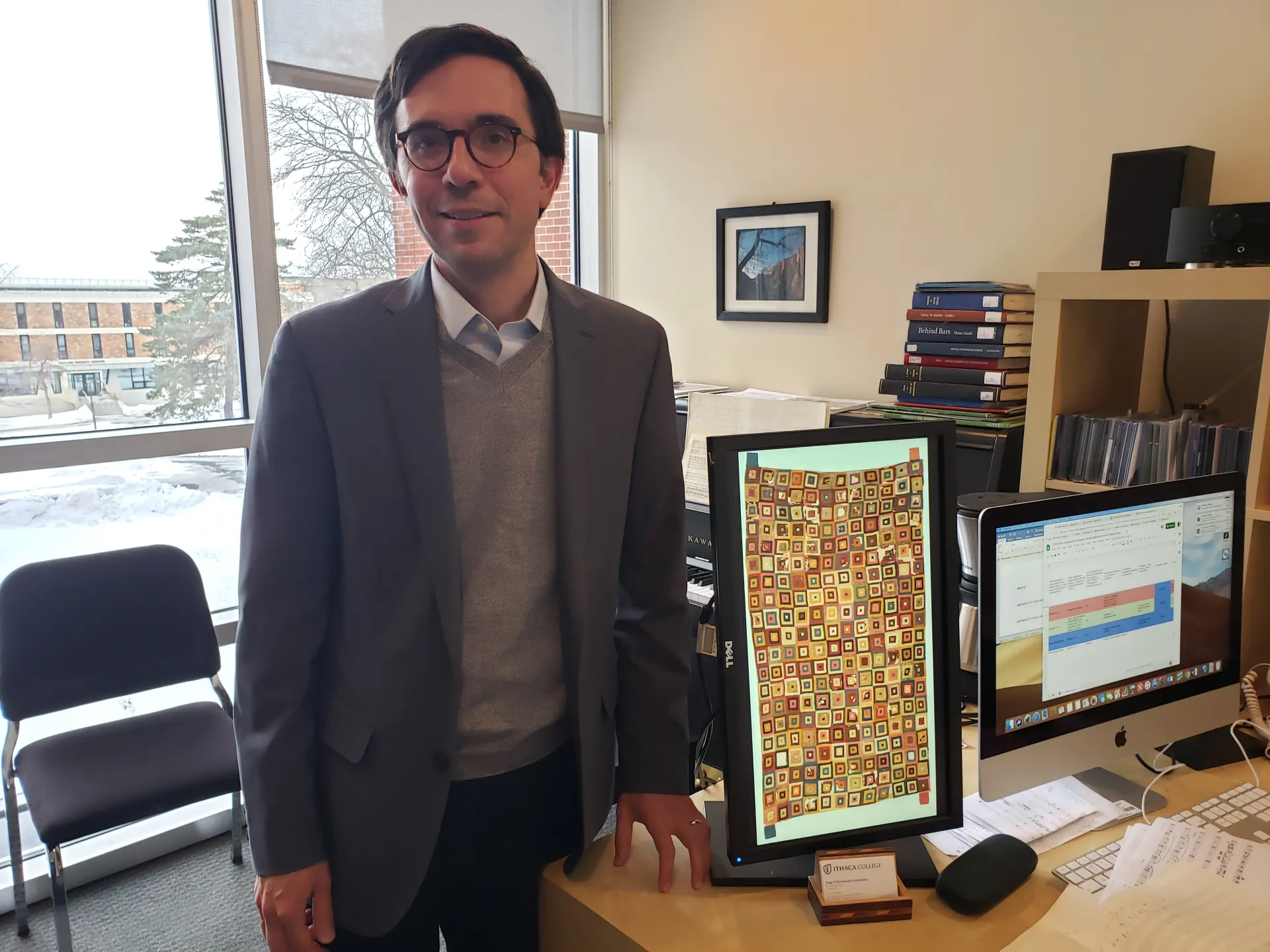It was a 13-year project, which Jorge Grossmann, associate professor of composition at Ithaca College, hadn’t planned on when he began composing what would later be titled “Siray I.” The completion of “Siray II” in 2009, and “Siray III” in 2018, were as much of a surprise to him as his source of inspiration: several millennia-old Paracas tapestries. The Paracas society, based in Peru, where Grossman originally hails from, was an Andean society existing between 800 and 100 BCE.
Siray, meaning “to weave” in Quechua, prompted the design of his chamber composition series. Written for a small ensemble (piano, cello, violin, flute and clarinet), Grossmann capitalized on the abstractness for which the Paracas weavers were known by demonstrating how an “interweaving” of notes by two or more instruments may form a singular, yet perhaps familiar sound while molding “musical textures that favor sudden changes in musical timbre,” which Grossmann (fittingly) refers to as “color” in music jargon.
“I like the idea of drawing musical ideas from a tapestry because a tapestry is such a flexible and dynamic form of visual art,” says Grossmann. “And it’s so mathematical, too, which plays such a big role in musical modernism.”
Indeed, mathematics played a large role in the creation of Grossmann’s Siray compositions, though none with quite so much purpose as in “Siray III,” in which Grossmann took on the entirely new challenge of communicating a tapestry’s construction to an almost literal level.
The tapestry used to create "Siray III” contains 240 concentric squares, woven in 22 different colors. “You will see that no two squares are alike,” says Grossmann. “This was amazing to me, because you knew this must have been planned. So, the way I worked with this concept was: We have 22 colors, so I am going to choose 22 different musical notes and work with that.”
The equal-tempered system musicians use only contains 12 pitches, which meant that Grossmann had to devise additional tones to fit his vision for the composition. The entirety of the piece wasn’t based on counting notes, Grossmann clarifies, but the main material was devised with such a framework in mind, while using his intuition to fill in the rest.
A student and teacher of musical modernism and music theory, Grossmann perpetually seeks ways to combine ancient, cultural, visual arts with modern composition. Grossmann speculates that “Siray III,” last performed in October at the 10th International Pharos Contemporary Music Festival by the Austrian ensemble Klangforum Wien in Cyprus, will not be the last of the series.
